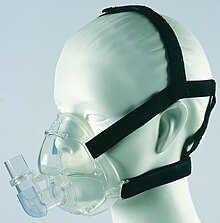The incubator [edit source]
An incubator is a plastic dome shaped machine designed as a crib that is equipped to regulate a newborn infant’s body temperature. The incubator is designed to allow the temperature to be adjusted according to the state of the baby’s current body heat. There is a range of five types of incubators that all serve different purpose on the neonatal intensive care unit. The closed box incubator is used to prevent infection that could be contracted the outside of the box; it filtrates the air and keeps the moisture fresh. The double-walled incubator is used to keep heat inside the box. Servo-controlled incubators are controlled by skin detectors which are designed to recognize the loss or gain of body heat and make adjustments to maintain the correct temperature. The open box incubator produces heat from beneath the baby to keep it warm. Portable incubators are used to transport the newborn to and from different parts of the hospital. [citation needed] In 1880, Dr. Tarnier was convinced that the maintenance of internal temperature was key to the premature infant's survival. This led him to introduce the first human incubator. Inspired by chicken eggs hatching in an incubator, he asked a zoo keeper to design a similar incubator for premature infants. Dr. Delee expanded the use and function of the incubator by incorporating an oxygen chamber and an electric controlled thermostat which allowed the incubator to be transported in ambulances. [1]

Oxygen administration assists and generates oxygen intake. Oxygen administration began with a metal forked device in the nostrils, and it is now administered through thin plastic tubes in the nostrils, also known as nasal cannula. The first ventilation of an infant was in 1961 in a positive pressure situation, and mechanical ventilation was improved in 1971. Mechanical ventilation is the process in which a machine, attached to the patient, regulates breathing by pumping air in and out of the lungs. Another type of breathing mechanism used is the CPAP mask which attaches to the face to help you breathe. CPAP masks were first used in 1973 as an alternate less invasive form of support. [citation needed]

A surfactant allows a substance to get “wet” to help another substance dissolve. In 1910, the first study of the use of surfactants on infants took place in Japan. Surfactant therapy since has improved the infant mortality rate by 50%. Surfactants combined with the least invasive respiratory therapy (bubble CPAP or nasal CPAP) has greatly improved the infant mortality rate in the US. [citation needed]
- ^ "What Are the Functions of an Infant Incubator?". LIVESTRONG.COM. Retrieved 2019-04-15.